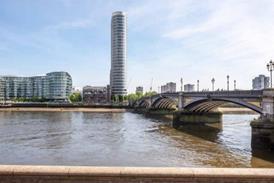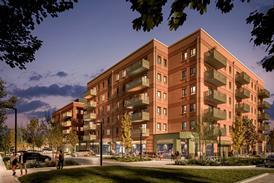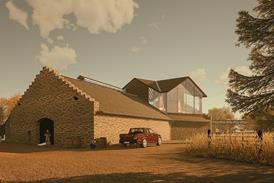The new act challenges the profession to up its game and rediscover its repututation for leadership and professionalism, writes Giuseppe Messina

The Build Safety Act (BSA) received Royal Assent in 2022, a direct reaction to the tragic failures in building safety that led to the Grenfell Tower fire. From April this year, any new works fall under the new legislation. For the construction and design industry, this should give way not just to an overhaul in regulations, but a much broader cultural change in our approach towards building safety, the appointment of professional bodies, and how teams work together to own and manage the associated risks of complex projects, in a much more integrated way.
Prior to the introduction of the BSA, building safety had, in too many cases, become a secondary process that fell to third parties, and lacked in sufficient technical resolution and rigour. Once projects started on site, opportunities would open up for contractors to make decisions and take control of the design process. For my generation of practising architects, this meant that the architect’s role within the construction process had become underappreciated, and devalued.
The introduction of the updated The Construction (Design and Management) Regulations in 2015 had the intent to make architects and designers health and safety inspectors on their own projects, but few practices took the initiative to integrate this scope into their work.
The majority of the risks in new build projects can be planned for in advance, and in the UK, we have really good expertise across designers, manufacturers, contractors and subcontractors. The main issue to date has been that these parties have rarely worked together to resolve the issues at hand, instead working to a model that has come to rely on risk mitigation or ‘design and dump’.
Now, in 2024, the issue of building safety is far more pressing, and the regulations more comprehensive. BSA legislation requirements for High Risk Buildings and gateway 2 submission have created a constructive platform for these bodies to come together earlier in the design process, opening up the potential for more efficient and joined up design and delivery, where delays on site are mitigated, commercial savings are made, and better buildings are delivered for the end user.
Going forward, by taking ownership of the Principal Designer role, architects must demonstrate that a design carries inherent technical robustness and complies with safety regulations prior to it going into the construction phase. This represents the opportunity, long overdue, for architectural practitioners to re-establish themselves as the pivotal arm when it comes to controlling the design vision.
Architects through their varied training have always been well versed in taking on board social, political context and commercial aspirations
But all of these positive cultural shifts within the industry can only come about if all parties come on board, and embrace the initial adjustment period to deliver the wider industry reset that is needed. At Pilbrow & Partners we have embarked on this journey through a number of key steps including preparing to join the Principal Designer Register and enhancing and altering our quality control procedures to reflect the new stages of design and competency checks.
We have also been reaching out to our clients to talk to them about the BSA and what it means for the projects coming online this year. And we have reached out to contractors that we regularly work with, to pave the way for an improved dialogue, and more regular check ins and site visits carried out together under the new regulations.
In turn, it would be encouraging to see clients taking measured steps to contribute to the process, taking part in these early conversations, and improving their construction competency. By investing and believing in a more joined up process, clients stand to benefit long-term from the prospect of the design that is signed off by the building regulator being the final design that is built and delivered.
>> Also read: Why architects must embrace the Principal Designer role
There is also the potential that this shift could improve the uptake of modern methods of construction (MMC) available to the industry. Currently the benefits of pre-manufacture and MMC are often missed out on, as unless considered at the very early development discussion stages, opportunities become lost.
The construction industry can be resistant to change, and the biggest obstacle when it comes to adopting the BSA in a meaningful way will be for the different professional bodies to come together and start listening to one another when it comes to managing the direction of design development. But I think all parties can recognise that good design solutions have always come about through collaboration and mutual respect.
Architects through their varied training have always been well versed in taking on board social, political context and commercial aspirations and delivering robust solutions that mediate all these aspects. There is no reason why we cannot lead with enthusiasm when it comes to embracing BSA legislation, which is paving the way for the industry to communicate better, collaborate and jointly record and manage the process when it comes to building safety, for the benefit of all.
>> Also read: It’s probably going to take a year for industry to get familiar with the new Building Safety Act regime
>> Also read: ‘Could do better’: RIBA conference delivers verdict on Building Safety Act progress
Postscript
Giuseppe Messina is a director at Pilbrow & Partners
















No comments yet